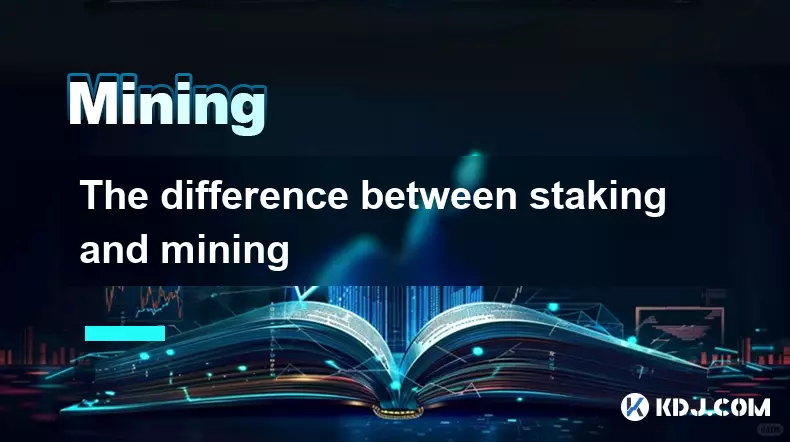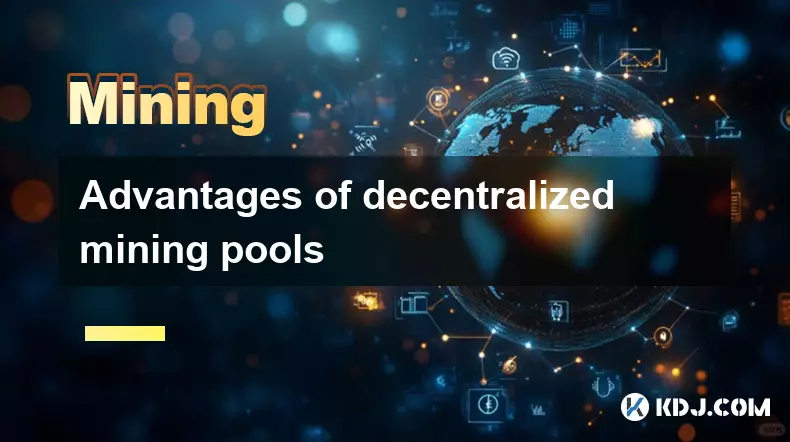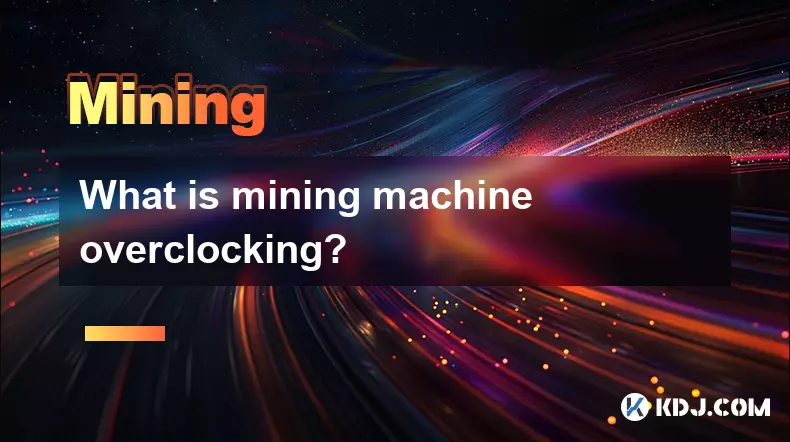-
 bitcoin
bitcoin $122288.232522 USD
0.16% -
 ethereum
ethereum $4480.662914 USD
-0.22% -
 xrp
xrp $2.962747 USD
-2.32% -
 tether
tether $1.000120 USD
-0.05% -
 bnb
bnb $1145.654223 USD
-2.07% -
 solana
solana $227.105217 USD
-1.67% -
 usd-coin
usd-coin $0.999548 USD
-0.02% -
 dogecoin
dogecoin $0.250875 USD
-2.04% -
 tron
tron $0.340654 USD
-0.49% -
 cardano
cardano $0.837968 USD
-2.52% -
 hyperliquid
hyperliquid $48.960449 USD
0.06% -
 chainlink
chainlink $22.049280 USD
-1.33% -
 ethena-usde
ethena-usde $1.000404 USD
0.02% -
 sui
sui $3.586212 USD
0.20% -
 avalanche
avalanche $29.894916 USD
-4.18%
Can you lose money mining Bitcoin?
Bitcoin mining can lead to financial losses due to high electricity costs, hardware depreciation, and volatile Bitcoin prices, often outweighing potential rewards.
Jul 29, 2025 at 10:29 am

Understanding the Financial Risks of Bitcoin Mining
Bitcoin mining involves using powerful computers to solve complex mathematical problems that validate transactions on the blockchain. While the reward for successfully mining a block can be substantial, the process is not guaranteed to generate profit. Many individuals enter mining with the expectation of earning passive income, but the reality is that you can lose money mining Bitcoin. This outcome often stems from miscalculating operational costs, equipment inefficiency, or unforeseen market changes. The primary reason for financial loss lies in the balance between electricity expenses, hardware depreciation, and the fluctuating value of Bitcoin.
High Upfront and Ongoing Costs
One of the most significant barriers to profitable mining is the initial investment required. Mining rigs, particularly ASIC (Application-Specific Integrated Circuit) machines, can cost thousands of dollars. These devices are designed solely for mining cryptocurrencies and offer high hash rates, but their prices vary significantly based on performance and availability. Beyond the hardware, additional expenses include:
- Power supplies and cooling systems to prevent overheating
- Internet infrastructure capable of handling constant connectivity
- Mining pool fees, if joining a collective to increase chances of earning rewards
- Maintenance and potential replacement parts over time
Even after acquiring the equipment, electricity consumption becomes a continuous financial drain. Mining rigs operate 24/7 and consume large amounts of power. In regions with high electricity rates, the cost per kilowatt-hour can quickly surpass the revenue generated from mined Bitcoin. For example, a miner spending $0.15 per kWh may find that their monthly electric bill exceeds their mining income if Bitcoin’s price dips or network difficulty increases.
Network Difficulty and Hash Rate Competition
The Bitcoin network automatically adjusts the difficulty of mining approximately every two weeks to maintain a consistent block time of 10 minutes. As more miners join the network, the overall hash rate increases, making it harder for individual miners to solve blocks. This means that even with a powerful setup, the probability of earning a block reward diminishes over time unless you scale up operations. Smaller miners often struggle to compete with large-scale mining farms that benefit from economies of scale, access to cheap energy, and optimized infrastructure. If your individual hash rate is too low relative to the total network, you may go weeks or months without earning any rewards, while still paying for electricity and maintenance.Bitcoin Price Volatility and Revenue Instability
The amount of Bitcoin earned through mining is fixed per block (currently 6.25 BTC, halving to 3.125 BTC in 2024), but the fiat value of that reward fluctuates daily. If the price of Bitcoin drops significantly during a period when you’re actively mining, the revenue generated may not cover your expenses. For instance, if you’re spending $8,000 monthly on electricity and hardware amortization, but Bitcoin’s price falls from $60,000 to $30,000, the same number of mined coins now cover only half your costs. This volatility introduces a speculative element to mining profitability, making it risky for those without financial buffers or long-term price outlooks.Hardware Obsolescence and Depreciation
Mining technology evolves rapidly, with newer ASIC models offering higher efficiency and lower power consumption. Older machines quickly become obsolete, losing their competitive edge. A miner who invested in a top-tier ASIC two years ago may now find it inefficient compared to current models, resulting in higher electricity costs per hash. Additionally, mining hardware depreciates quickly due to constant use and heat exposure. Many ASICs have a functional lifespan of 2 to 3 years under full load, after which their performance degrades or they fail entirely. Selling used mining equipment often results in significant losses, as the resale market is flooded with outdated models. This rapid depreciation means that even if mining breaks even operationally, the loss in equipment value can lead to an overall financial deficit.Step-by-Step Evaluation of Mining Profitability
Before investing in mining, it’s crucial to conduct a detailed cost-benefit analysis. Use the following steps to assess whether mining could result in a loss: - Calculate your electricity cost per kWh by reviewing your utility bill
- Determine the power consumption (in watts) of your mining rig using manufacturer specifications
- Estimate daily power cost by multiplying wattage by hours of operation, dividing by 1000 to get kWh, then multiplying by your electricity rate
- Check the current network difficulty and your rig’s hash rate using online mining calculators
- Estimate daily Bitcoin earnings based on your hash rate and pool efficiency
- Convert estimated Bitcoin earnings to USD using the current market price
- Subtract daily operational costs from daily revenue to determine net profit or loss
If the result is negative or only marginally positive, mining may not be financially viable. Always factor in hardware costs amortized over its expected lifespan.
Frequently Asked Questions
Can I mine Bitcoin profitably with a home computer? No, standard home computers lack the processing power required for competitive Bitcoin mining. Modern mining is dominated by ASICs, and consumer-grade CPUs or GPUs cannot generate meaningful returns due to low hash rates and high electricity consumption relative to output.What happens if Bitcoin’s price crashes after I buy mining equipment?A price crash can turn a potentially profitable operation into a loss-making one. Since mining rewards are fixed in Bitcoin terms, a lower fiat value means reduced revenue. If your operational costs exceed earnings in USD terms, you will lose money even if you successfully mine coins.
Is it possible to break even on mining over time?Yes, under favorable conditions such as low electricity costs (below $0.08/kWh), efficient hardware, and stable Bitcoin prices, some miners achieve break-even or modest profits. However, this requires precise planning and ongoing monitoring of network and market conditions.
Do mining pools guarantee income?Mining pools increase the frequency of rewards by combining hash power, but they do not guarantee profit. Pool payouts are shared based on contribution, and fees (typically 1%–3%) reduce net earnings. You can still lose money if operational costs exceed pooled rewards.
Disclaimer:info@kdj.com
The information provided is not trading advice. kdj.com does not assume any responsibility for any investments made based on the information provided in this article. Cryptocurrencies are highly volatile and it is highly recommended that you invest with caution after thorough research!
If you believe that the content used on this website infringes your copyright, please contact us immediately (info@kdj.com) and we will delete it promptly.
- BlockDAG, DOGE, HYPE Sponsorship: Crypto Trends Shaping 2025
- 2025-10-01 00:25:13
- Deutsche Börse and Circle: A StableCoin Adoption Powerhouse in Europe
- 2025-10-01 00:25:13
- BlockDAG's Presale Buzz: Is It the Crypto to Watch in October 2025?
- 2025-10-01 00:30:13
- Bitcoin, Crypto, and IQ: When Genius Meets Digital Gold?
- 2025-10-01 00:30:13
- Stablecoins, American Innovation, and Wallet Tokens: The Next Frontier
- 2025-10-01 00:35:12
- NBU, Coins, and Crypto in Ukraine: A New Yorker's Take
- 2025-10-01 00:45:14
Related knowledge

The difference between staking and mining
Sep 24,2025 at 05:18am
Understanding Staking in the Cryptocurrency Ecosystem1. Staking involves holding funds in a cryptocurrency wallet to support the operations of a block...

How to participate in testnet mining?
Sep 22,2025 at 09:18am
Understanding Testnet Mining in the Crypto Ecosystem1. Testnet mining is a method used by blockchain developers to simulate real-world conditions on a...

How to dispose of abandoned mining machines?
Sep 19,2025 at 08:19pm
Assessing the Condition of Abandoned Mining Rigs1. Begin by inspecting each mining machine for visible damage, corrosion, or missing components. Machi...

How to identify high-quality mining pools?
Sep 21,2025 at 03:19pm
Reputation and Track Record1. A mining pool’s reputation is built over time through consistent performance and transparency. Pools that have operated ...

Advantages of decentralized mining pools
Sep 20,2025 at 04:36pm
Enhanced Security and Resistance to Censorship1. Decentralized mining pools operate on blockchain-based smart contracts, eliminating the need for a ce...

What is mining machine overclocking?
Sep 21,2025 at 07:19pm
Understanding Mining Machine Overclocking1. Mining machine overclocking refers to the process of increasing the operating frequency of a cryptocurrenc...

The difference between staking and mining
Sep 24,2025 at 05:18am
Understanding Staking in the Cryptocurrency Ecosystem1. Staking involves holding funds in a cryptocurrency wallet to support the operations of a block...

How to participate in testnet mining?
Sep 22,2025 at 09:18am
Understanding Testnet Mining in the Crypto Ecosystem1. Testnet mining is a method used by blockchain developers to simulate real-world conditions on a...

How to dispose of abandoned mining machines?
Sep 19,2025 at 08:19pm
Assessing the Condition of Abandoned Mining Rigs1. Begin by inspecting each mining machine for visible damage, corrosion, or missing components. Machi...

How to identify high-quality mining pools?
Sep 21,2025 at 03:19pm
Reputation and Track Record1. A mining pool’s reputation is built over time through consistent performance and transparency. Pools that have operated ...

Advantages of decentralized mining pools
Sep 20,2025 at 04:36pm
Enhanced Security and Resistance to Censorship1. Decentralized mining pools operate on blockchain-based smart contracts, eliminating the need for a ce...

What is mining machine overclocking?
Sep 21,2025 at 07:19pm
Understanding Mining Machine Overclocking1. Mining machine overclocking refers to the process of increasing the operating frequency of a cryptocurrenc...
See all articles










































































